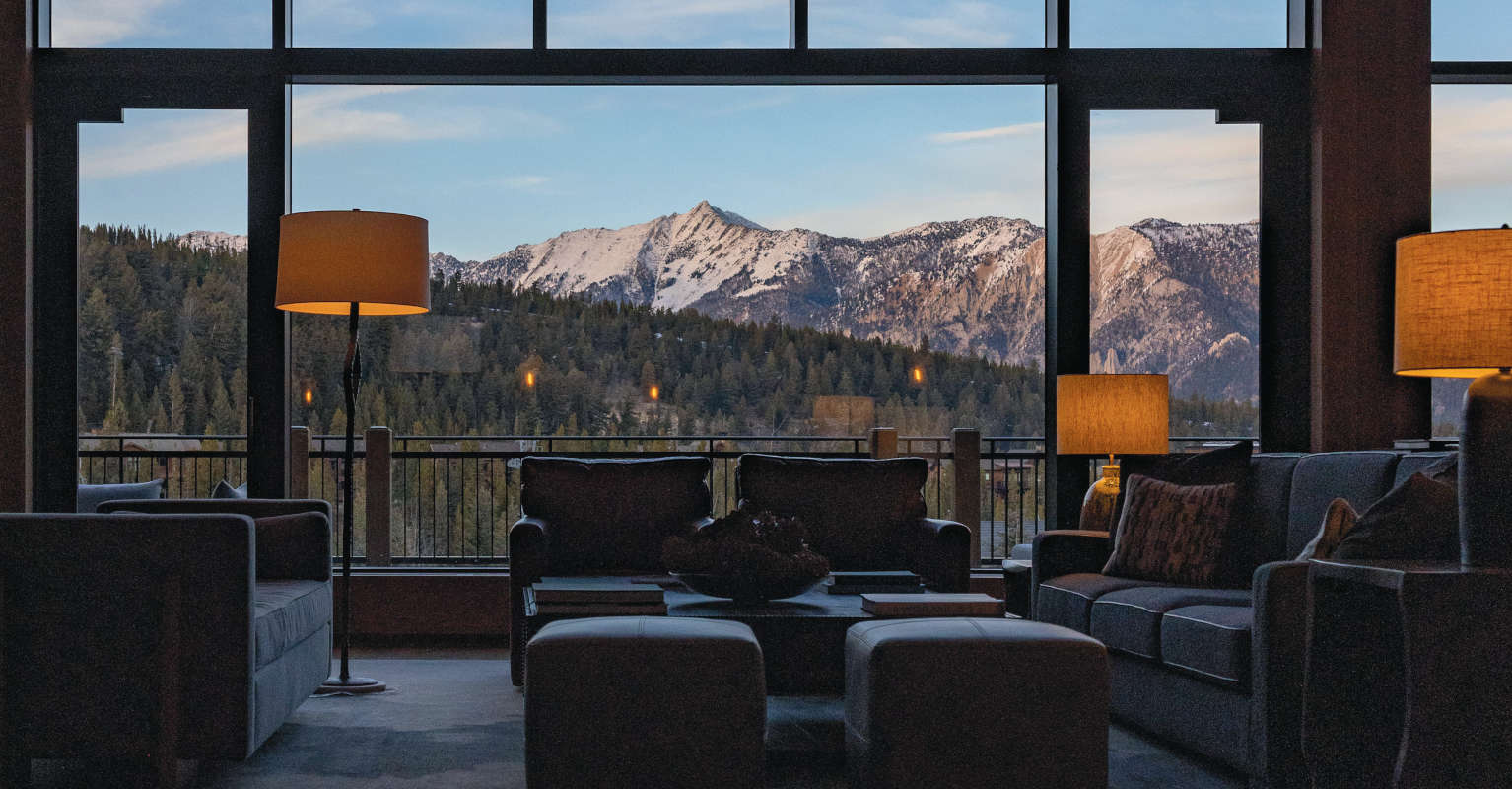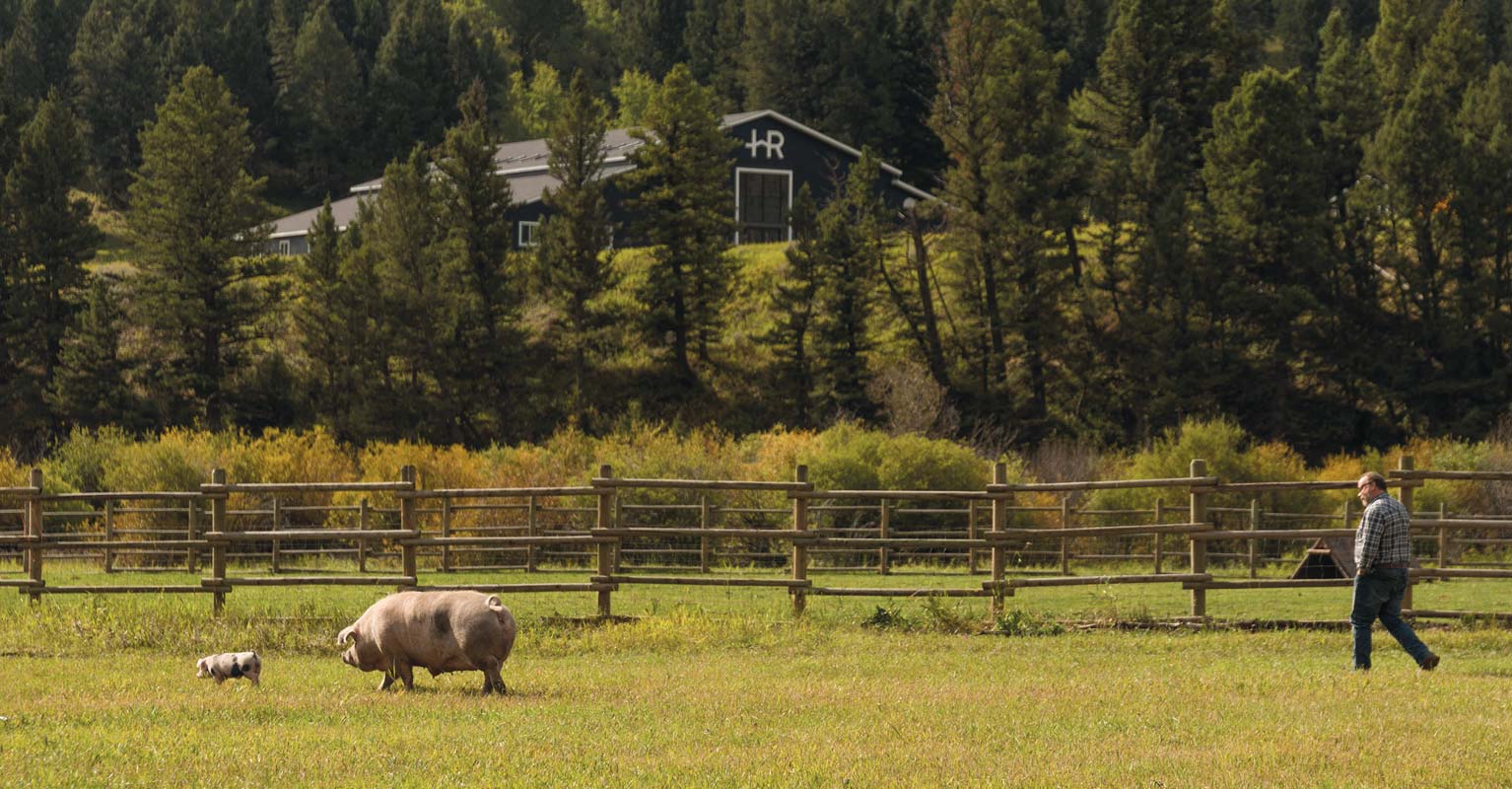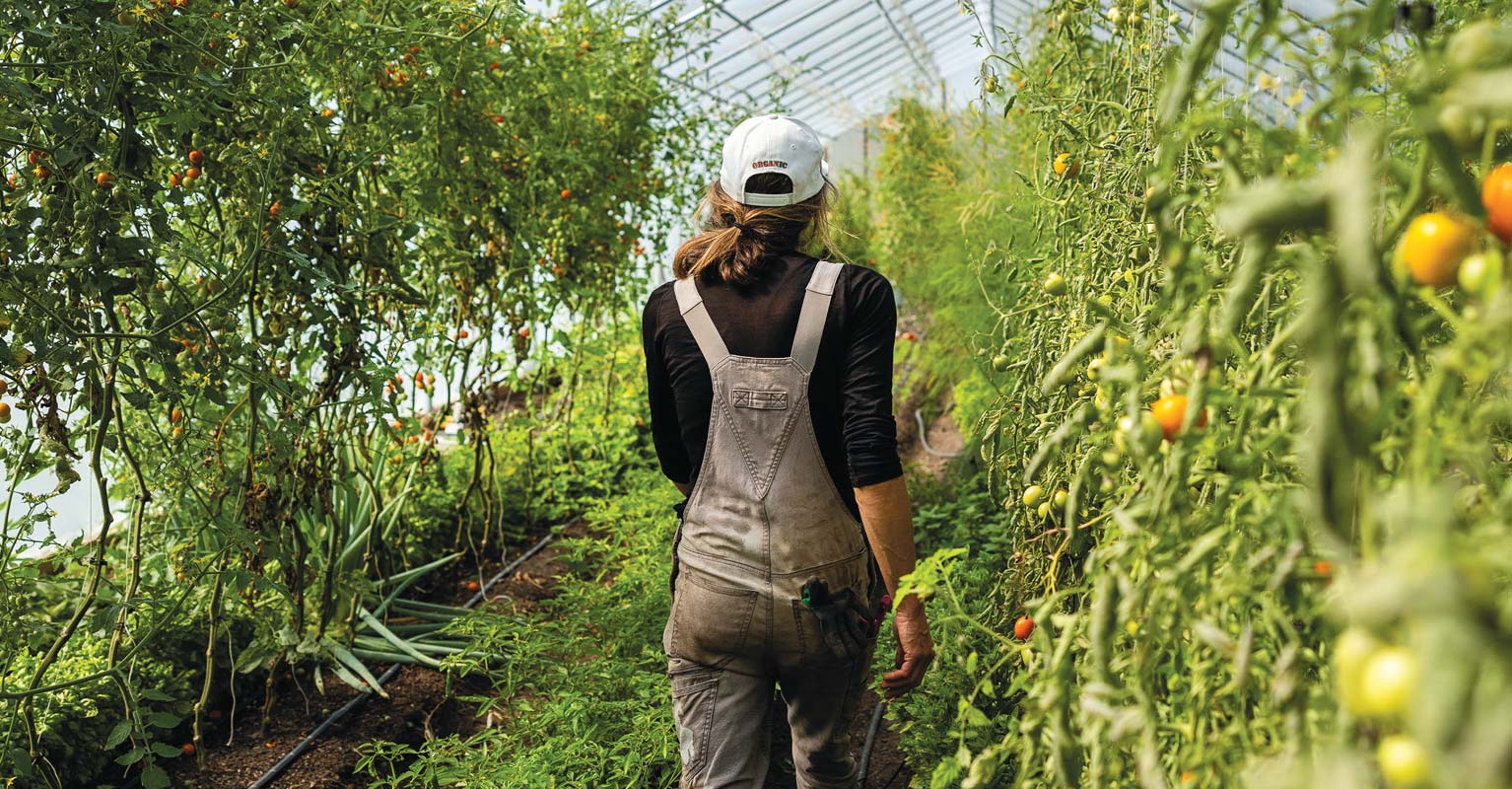Lynette Two Bulls (middle right) teaches Makysha Highwalker, Tayler Small, and Velma Fisher the right time to harvest different vegetables as a part of the Yellow Bird Lifeways Center’s Food Sovereignty Program.
Northern Cheyenne Food Sovereignty Program
At a glass patio table on the Northern Cheyenne Reservation, about 100 miles east of Billings, Montana, sunlight dapples an awning that protects several young women from the sun as they work. They sit on comfortable wicker furniture adorned with colored cushions as they twist seeds off dried corn cobs. Lynette Two Bulls sits in their circle, in a matching chair, overseeing their work.
Two Bulls is obviously in charge, but not in a commanding way. She strikes the balance between being strict, watchful, and empathetic—something only the best educators can achieve. This is, in essence, what she is: a teacher. She spends her summer days running the Food Sovereignty Program as a part of the nonprofit, Yellow Bird Lifeways Center, she and her partner, Chief Phillip Whiteman, helped to start 20 years ago. As a part of this work, she educates her assistants, interns, and community members in traditional food practices.
“In our culture, we believe all plants, animals, water, people of all colors—we’re all connected at a deep level,” Two Bulls says. As the teenagers remove seeds from the cobs, Two Bulls adds to the lesson. “We have to be careful of the mind-set we carry as we handle the corn. That mind-set is what we’re feeding back into the land, our community, and our bodies.”
Healing through food is a key part of Two Bulls’ teachings. During the late stages of colonization, in what we know now as the contiguous United States, Native foodways were threatened, along with many other traditional Indigenous practices, as Euro-Americans forced assimilation on tribes. As a result of this trauma, Native people today are re-empowering themselves and finding catharsis through a deeper connection with their culture and the land.
“That’s why our program is so important: It’s about reconnecting with our food. It’s not just about growing a garden; it’s about nurturing our garden and nurturing our own spirits—ourselves,” says Two Bulls. “Science is catching up to what our people always knew: that the land heals us.”
But addressing the wounds of cultural assimilation isn’t the only benefit of the Food Sovereignty Program.
In the years since the beginning of the reservation period, sovereign nations have been subjected to disparities in their livelihoods and health. Many reservations are considered food deserts, and access to fresh, healthy food can be scarce.
“We address food insecurity through food sovereignty,” says Two Bulls, still observing the interns at work. “We’re empowering our people and our community to be self-sufficient. That’s what food sovereignty is.” Community members who are interested in participating are asked to fill out a survey so that the program administrators can learn how to best address their needs. After receiving all the questionnaires, Two Bulls learned that 60 percent of this year’s participants experience food insecurity. In other words, they don’t know where their next meal will come from.
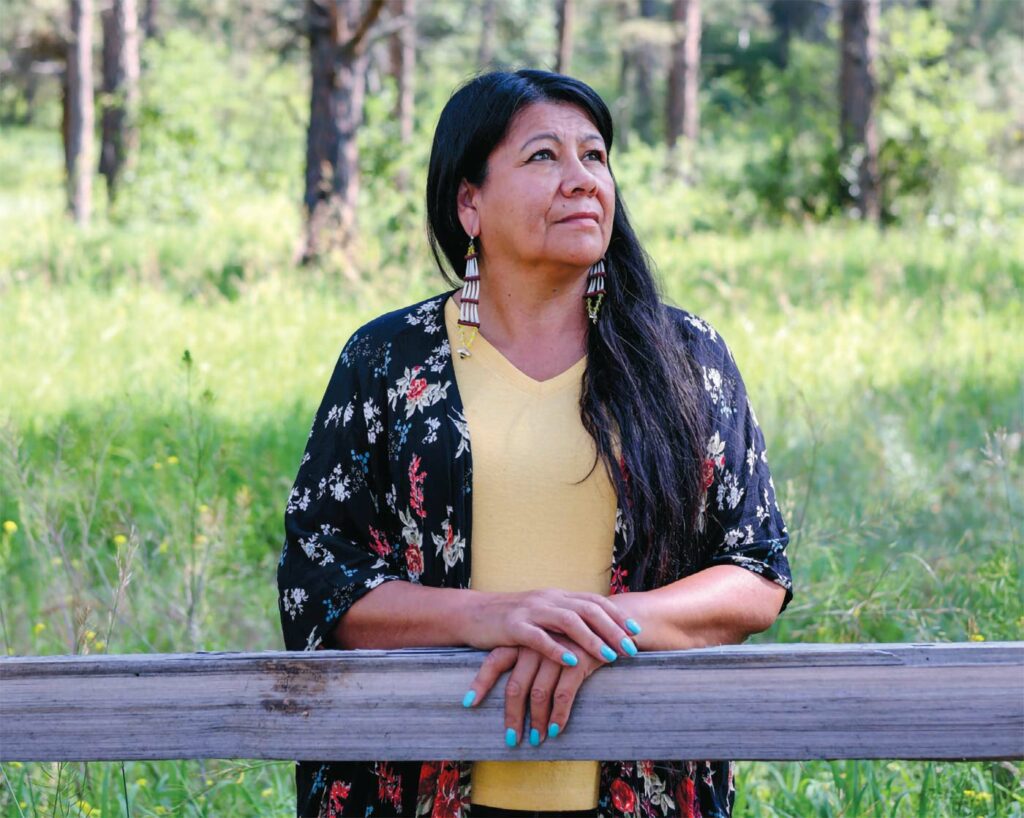
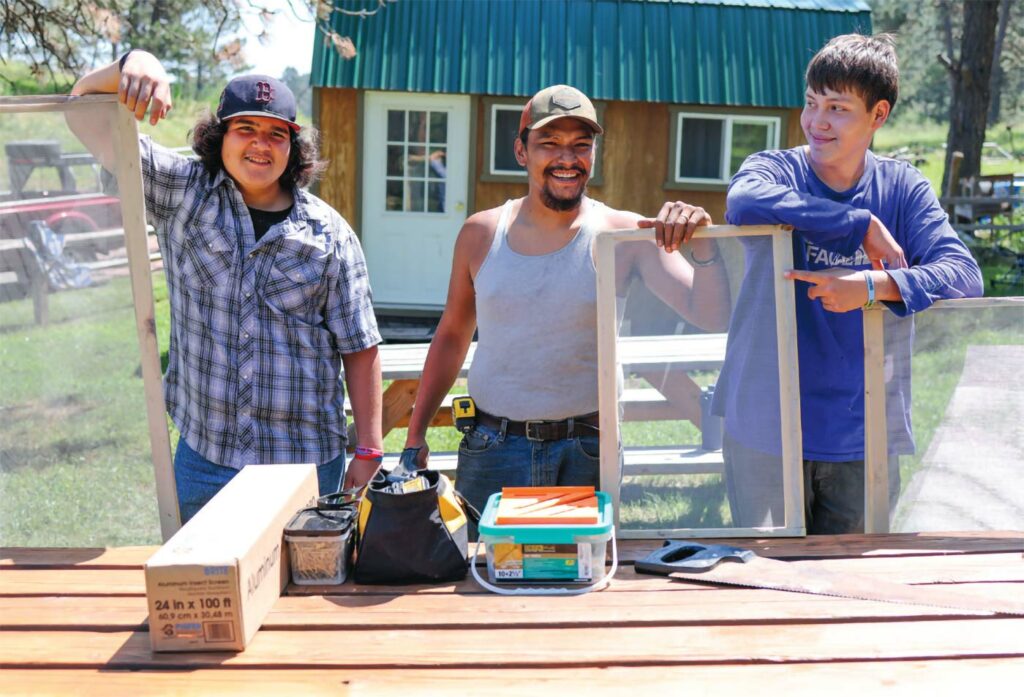
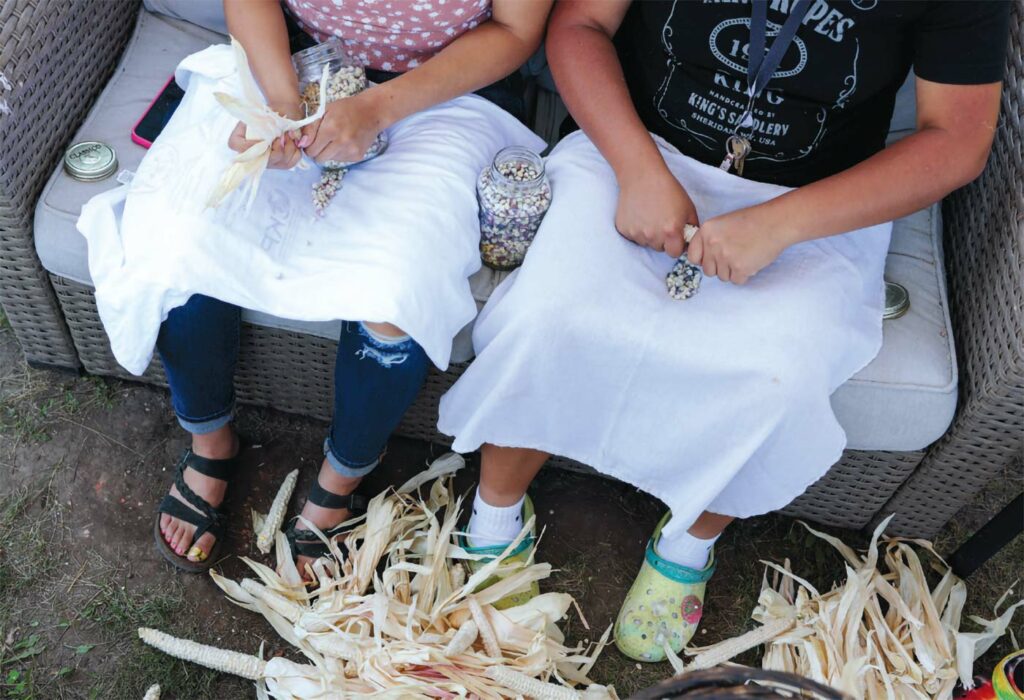
But for such a heavy topic, the mood around the program is light. Under the awning, Makysha Highwalker, Tayler Small, and Velma Fisher joke and laugh easily with each other. Nearby, Peyton Killsnight, Jordan Stone, and Torey Wolfvoice are starting to build drying racks. “This is the first batch,” says Fisher, looking toward the assembly line. “They need to make 80 or so, for everyone in the program.”
The frames are cut, stapled, and screwed together then covered with mesh, resulting in a rack that resembles a window screen. Then plants, veggies, and fruits will be stretched flat onto the racks to preserve for the winter. Some of these will be eaten, while others will be used for medicinal purposes.
Handmade drying racks are just one of the resources that the Food Sovereignty Program provides to its participants. Serving as a multipurpose donation and education center, the program supports community members in their re-connection with traditional food practices but also provides tools, like hoses and tomato trellises, to grow their own gardens at home. After a lunch break, Two Bulls turns to the young women. “Are you ready?” she asks. “Let’s go out onto the land.” They walk from the shaded workspace to the forested hill above them. Here, she explains to her pupils the medicinal properties of the plants growing around them and points to each as they walk. “We’ve used plants and herbs as medicine for a long time, so it’s important that these girls, and the community, start re-learning that knowledge. Then we can be self-sufficient, not just with food but with our medicine, too,” Two Bulls says.
Visible from the vantage point of the hill and baking in the sun below is the greenhouse, educational garden, and gravel road that leads up to Two Bulls’ home. That’s where the group heads next.
When Two Bulls was a little girl, her grandmother gardened out of necessity. “That was all we had,” she says. “We canned deer meat, dug up wild turnips—we really lived off of the land.” So, when she moved into her current house on the Northern Cheyenne Reservation, she started a garden for herself and for her family. It was a patch of land on the highway-side of her house, and with the reservation being a tight-knit community, passersby would honk from the road when they’d see Two Bulls working in the family garden.
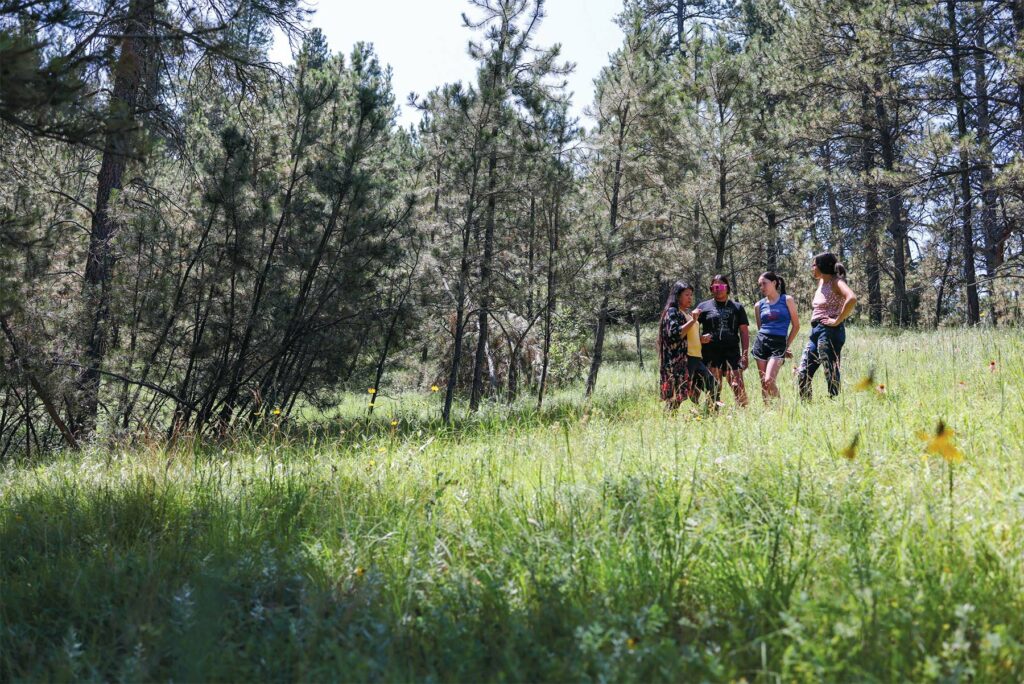
Eventually, the honking turned into pulling over, and community members would wade through the long grasses on the shoulder of the highway to where Two Bulls was working the soil. “They wanted to know what I was doing,” she says, smiling. “There really was a community need [for this program]. … I never intended for it to grow into this.” She began helping individual people start their own gardens, and as her own garden grew in size, so did the group of people she was helping. That was 12 years ago.
Since then, her garden has evolved into the Yellow Bird Lifeways educational garden, and her family’s home is the nonprofit’s community center.
“I always joke: Do you know the song ‘I was country before country was cool’? That’s us. We were doing food sovereignty before food sovereignty was cool,” she says, laughing. In the years since Two Bulls planted her garden, a movement among other Native communities across the continent took off. Indigenous food sovereignty programs are now flourishing in many parts of North America as tribes push to reclaim their culture.
The women enter the garden and the air sparkles with the sound of wind chimes. The breeze is doing its best, but it’s still much hotter down here than it was in the forest on the hill. “We’ll go over there and harvest the garlic,” Two Bulls says. “Make sure you knock all the dirt off of them before you put them in the basket.”
Highwalker, Small, and Fisher all bend to the garlic plants, pull them from their bed, and introduce them to the sun. “It’s harder than I thought,” Highwalker says, using the back of her hand to wipe sweat off her forehead.
After the job is done, the group moves on through the wandering rows and beds. They cut chamomile and lavender flowers off their stems for tea, pull a few green beans from their vines, and eventually have a few cardboard boxes filled with the garden’s little bounty. Cars and trucks rumble by on the highway behind them, backdropped by hills decorated with red clay and golden grasses.
“In the state of Montana, where we have this beauty and these natural resources, we need to focus on what brings us together, not on what divides us,” Two Bulls says. “We need to focus on that stewardship of the land so that we take care of each other. To plant a garden is to plant hope.”


